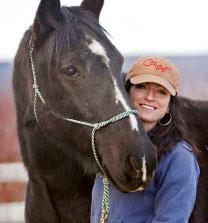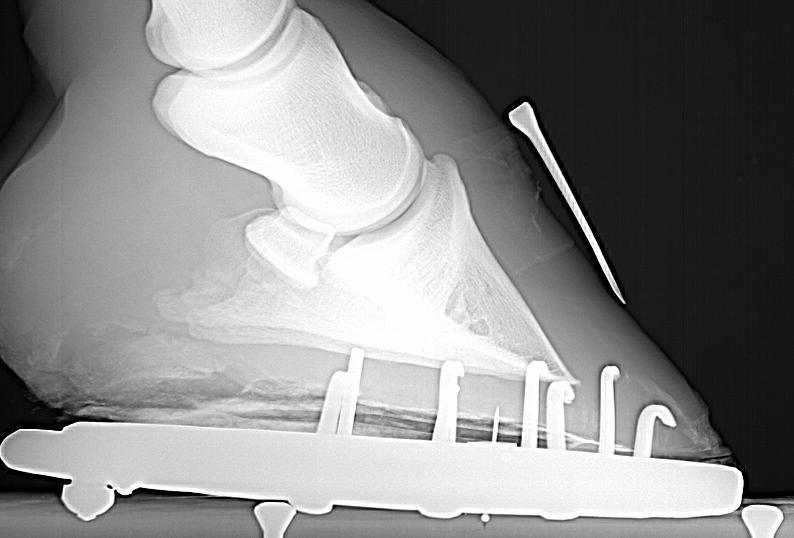By Dr. Alicia Nolfi
What comes to mind when you think about an X-ray? Most people visualize white bones on a black background. While it’s true that X-rays allow us to visualize bone health and conformation in the horse’s foot, there is more insightful information that can be obtained from X-rays of the Equine Foot, if we know how to look.
X-rays taken with a standardized technique permit measurements of soft tissue parameters of the foot that speak volumes about the overall health of the foot. After a complete physical examination of the foot, this vital information along with a picture of the bony structures is key to assessing the health of the foot because it is the inside health of the foot that determines the outside and general health of the foot.
Soft tissues in the foot consist of structures that are not bone – the hoof and lamina, sole and sole corium, digital cushion, tendons and ligaments, etc. There are approximate values for soft tissue parameters that we measure which indicate good health. In turn, there are also measurements of these parameters that indicate impending injury or poor health. Often lameness originates from soft tissues rather than bone. Being able to interpret the message from soft tissue parameters gives us the ability to almost predict the future. If we recognize a potential problem we can work to correct it before an actual lameness or injury. The key is knowing how to take the X-Ray and how to read the soft tissue parameters.
Here’s what we are looking for:
- Sole Depth – the amount of sole underneath the apex of the coffin bone.
- Palmar Angle – the angle that the wings of the coffin bone make with the ground.
- Digital Breakover – the horizontal distance from the apex of the coffin bone to where the foot or shoe stops touching the ground.
- Horn/Lamellar Zone – the distance between the outside of the hoof wall and the coffin bone, measured in two places, just below the extensor process of the coffin bone, and at the Alec of the coffin bone.
- Coronary Band-Extensor Process Distance – the vertical distance between the top of the coronary band and the top of the extensor process.
- Bone Angle – the Angle the bottom of the coffin bone makes with its face, at the toe.
We must have an understanding of the values for healthy feet (some of the values can vary greatly depending on age, use and breed) to determine the necessary trimming or shoeing strategies to increase the health of the foot. These soft tissue parameters will change long before bone or hoof capsule changes, including long before what is seen from the outside, providing much insight to problems that may be brewing.
The important thing to remember is that the inside health of the foot determines its outside health. We should shift our focus from trying to create the “perfect” cosmetic appearance to understanding what a healthy foot looks like on the inside and out, and strive for that. Our horses will thank us.
Stay tuned for next month’s discussion on healthy physical characteristics of the horse foot, and later on for the value of the digital venogram!


